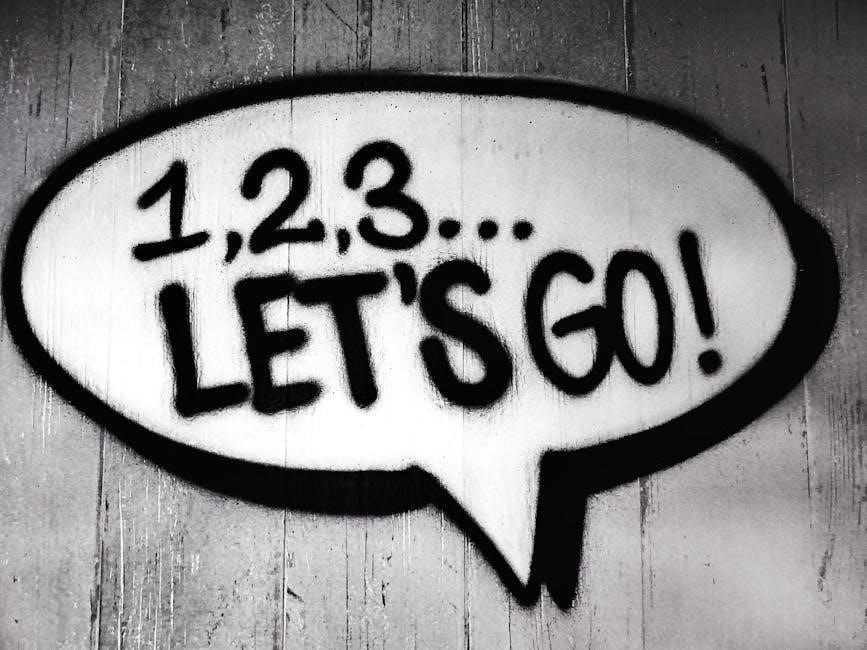2nd Grade Sight Words PDF: A Comprehensive Guide
Unlock reading success! This comprehensive guide dives into 2nd grade sight words, offering free printable PDFs and engaging activities. Elevate your child’s reading fluency with high-frequency word lists.
Second grade marks a crucial stage in a child’s reading journey. Mastering sight words becomes increasingly important for building fluency and comprehension. Sight words, also known as high-frequency words, are those commonly encountered in reading materials. Unlike words that can be easily decoded using phonics rules, sight words are recognized instantly, without sounding them out. These words form the foundation of reading proficiency, allowing children to focus on understanding the meaning of the text rather than struggling with individual word recognition.
In 2nd grade, students are expected to expand their sight word vocabulary significantly. Common lists like Dolch and Fry provide structured sets of words to learn. Regular practice and engaging activities are essential to help children memorize and internalize these words. By mastering 2nd grade sight words, children gain confidence in their reading abilities, which in turn fosters a love of reading and a greater capacity for learning across all subjects. This skill will set them up for success in the grades to come.

Why Sight Words are Important in 2nd Grade
Sight words are vital in 2nd grade because they enhance reading skills with ease. Recognizing basic words instantly boosts fluency and comprehension, setting the stage for academic success.
Building Reading Fluency
Reading fluency is significantly enhanced through mastering sight words in the second grade. When children can instantly recognize high-frequency words, they spend less time decoding and more time understanding the text. This automaticity allows for smoother reading, improving pace and intonation. As students encounter sight words repeatedly, their confidence grows, making reading a more enjoyable experience.
Increased fluency directly impacts comprehension. When a child doesn’t struggle with individual words, they can focus on the overall meaning of sentences and paragraphs. This ability to quickly process words is crucial for developing a deeper understanding of the material. Moreover, fluent readers are better equipped to handle more complex texts, setting them up for success in later grades.
Regular practice with sight words is essential for building and maintaining reading fluency. Consistent exposure to these words through various activities helps solidify their recognition, leading to improved reading speed and accuracy.
Improving Reading Comprehension
Mastering sight words in 2nd grade is pivotal for boosting reading comprehension. When students instantly recognize high-frequency words, they can focus their cognitive energy on understanding the meaning of the text, rather than struggling to decode individual words. This effortless recognition allows them to grasp the overall context and follow the storyline more effectively.
By reducing the cognitive load associated with decoding, sight word mastery enables children to engage more deeply with the material. They can pay attention to nuances, make inferences, and connect ideas within the text. This enhanced focus leads to a more thorough and meaningful understanding of what they are reading.
Furthermore, a strong foundation in sight words empowers students to tackle more complex texts with confidence. As their comprehension skills improve, they develop a greater appreciation for reading and are more likely to become lifelong learners. Consistent practice and reinforcement of sight words are essential for unlocking their full potential in reading comprehension.

Common 2nd Grade Sight Word Lists
Explore essential 2nd grade sight word lists! Discover Dolch, Fry, and high-frequency words crucial for reading success. Download free PDFs to help your child excel!
Dolch Sight Words for 2nd Grade
The Dolch sight word list, designed for grades K-2, is a cornerstone of early literacy. For second graders, mastering these words is crucial. The 2nd grade Dolch list includes , such as “always,” “around,” “because,” and “before.” Recognizing these words instantly boosts reading speed and comprehension.
These words, frequently encountered in reading material, form a foundation for more complex vocabulary; Consistent practice with Dolch sight words allows children to focus on understanding the meaning of sentences rather than struggling with individual words. Incorporating these words into daily reading activities and games will significantly improve reading fluency and confidence.
Many educators and parents rely on the Dolch list for its effectiveness in building a strong reading base. By the end of second grade, proficiency in these sight words is a key indicator of future reading success, setting the stage for more advanced reading skills.
Fry Sight Words for 2nd Grade (Second 100)
Building upon the foundation of the first 100 Fry sight words, the second 100 are essential for 2nd-grade reading proficiency. These words, numbered 101-200, include high-frequency terms like “over,” “new,” “sound,” “take,” and “only.” Mastering this list expands a child’s reading vocabulary and enhances reading speed.
The Fry sight words are carefully selected for their prevalence in reading materials, making them invaluable for improving comprehension. These words enable readers to decode sentences more quickly, allowing them to focus on the overall meaning; Consistent practice, through flashcards and reading exercises, is vital for achieving fluency.
Incorporating the second 100 Fry sight words into daily reading routines will significantly contribute to a child’s reading development. Recognizing these words with ease boosts confidence and sets the stage for continued success in reading and learning across various subjects.
High-Frequency Words for 2nd Grade
Beyond Dolch and Fry lists, many other high-frequency words are crucial for 2nd-grade reading success. These words appear often in texts and are essential for building reading fluency. Examples include words like “about,” “above,” “after,” “again,” and “almost,” contributing significantly to overall reading comprehension.
These high-frequency words enable children to read more smoothly and confidently. Recognizing them quickly allows readers to focus on the meaning of the text rather than struggling with individual words. A comprehensive list of these words is invaluable for teachers and parents supporting young readers.
Mastering these words involves consistent exposure and practice. Using flashcards, engaging in sentence-building activities, and incorporating them into daily reading routines can greatly improve a child’s reading abilities. By focusing on high-frequency words, educators and families can provide a solid foundation for reading success in 2nd grade and beyond.

Free Printable 2nd Grade Sight Words PDF Resources
Discover free, printable 2nd grade sight words PDF resources online! Access valuable lists to enhance your child’s reading skills. Improve fluency with readily available materials.
Where to Find Free Lists
Finding free 2nd grade sight word lists is easier than you might think! Numerous online resources offer printable PDFs to support your child’s reading journey. Look to educational websites and blogs dedicated to elementary education for curated lists. Many offer Dolch and Fry sight word lists tailored for second graders.
Reputable teacher resource websites frequently provide downloadable materials; Simply search for “2nd grade sight words PDF” to uncover a wealth of options. Be sure to check the list against other sources to ensure comprehensive coverage.
Don’t overlook printable resources from educational publishers and even some libraries. These may offer unique lists or variations on common sight words. Consider exploring websites affiliated with popular reading programs, as they often provide supplementary materials. Many of these resources are completely free and designed to make learning sight words accessible and engaging for young learners, bolstering their reading confidence and overall academic performance.

Activities and Games to Practice 2nd Grade Sight Words

Make learning fun! Engage kids with flashcard activities and sentence-building exercises. Transform sight word practice into enjoyable games for effective learning and improved reading skills.
Flashcard Activities
Flashcards are a versatile tool for reinforcing sight word recognition. Create a set of flashcards featuring 2nd grade sight words from the Dolch or Fry lists, or even high-frequency words commonly used in second-grade reading materials. Begin by showing each card individually, prompting the child to read the word aloud. Encourage quick recognition to build fluency.
Incorporate games to make flashcard practice more engaging. “Sight Word War” involves two players flipping over a card simultaneously; the player who correctly reads their word first wins both cards. “Go Fish” can be adapted using pairs of sight word flashcards. For a kinesthetic approach, spread the flashcards on the floor and have the child jump to each word as it’s called out.
Regular, short sessions with flashcards can significantly improve a child’s ability to quickly recognize and recall essential sight words, ultimately boosting their reading confidence and comprehension. Focus on mastering a few words at a time, gradually increasing the difficulty as the child progresses.

Sentence Building Exercises

Sentence building exercises are a fantastic way to solidify a child’s understanding and usage of 2nd grade sight words within context. Start by providing a list of sight words and challenge the child to create simple sentences using each word. Encourage them to be creative and imaginative while ensuring the sentences are grammatically correct. For example, using the sight word “because,” a child might write, “I like ice cream because it is sweet.”
Another effective exercise involves providing incomplete sentences where the child must fill in the missing sight word. This helps reinforce comprehension and demonstrates how sight words function within a sentence structure. For instance, “The dog ran ____ the house” (around). You can also use picture prompts, asking the child to write a sentence describing the image using specific sight words.
These activities not only strengthen sight word recognition but also enhance vocabulary, grammar skills, and overall reading comprehension. By actively constructing sentences, children develop a deeper understanding of how words work together to convey meaning.

Addressing Reading Difficulties with Sight Words
Struggling with sight words? Identify reading problems early and implement effective strategies. Support struggling readers with targeted activities and resources to improve fluency and comprehension.
Identifying Reading Problems
Recognizing reading difficulties early in second grade is crucial for intervention. Pay close attention to whether your child struggles with high-frequency words, as these form the foundation of reading fluency. Look for signs such as slow reading pace, frequent mispronunciations of common words, and difficulty comprehending text, even after reading it aloud.
Observe if your child hesitates or pauses frequently when encountering sight words that should be recognized instantly. Another indicator is a reluctance to read or engage in reading activities. It’s important to differentiate between occasional struggles and persistent patterns of difficulty.
Consider assessing your child’s sight word knowledge using a 2nd grade sight word list. Note any words they consistently miss. Compare their performance to benchmarks for their grade level. If difficulties persist, consider consulting with educators or reading specialists to gain a deeper understanding of the issues and develop targeted strategies to support their reading development. Addressing these problems promptly can significantly improve reading skills and foster a positive attitude toward reading.
Strategies for Struggling Readers
For second graders facing reading challenges, employing targeted strategies can make a significant difference. Begin by focusing on building a strong foundation in sight words. Utilize multi-sensory techniques like writing words in sand or using playdough to form letters, enhancing memory through tactile learning.
Break down sight word lists into smaller, manageable chunks, focusing on mastery before moving forward. Incorporate games such as sight word bingo or matching games to make learning fun and engaging. Regularly review previously learned words to reinforce retention.
Consider using flashcards with visual cues or mnemonic devices to aid memorization. Encourage repeated reading of familiar texts to build fluency and confidence. Provide positive reinforcement and celebrate small victories to foster a growth mindset;
If difficulties persist, explore alternative reading programs or seek support from a reading specialist. Early intervention is key to preventing long-term reading struggles. Remember to tailor strategies to the individual child’s learning style and needs, creating a supportive and encouraging learning environment. Consistency and patience are crucial for success.
